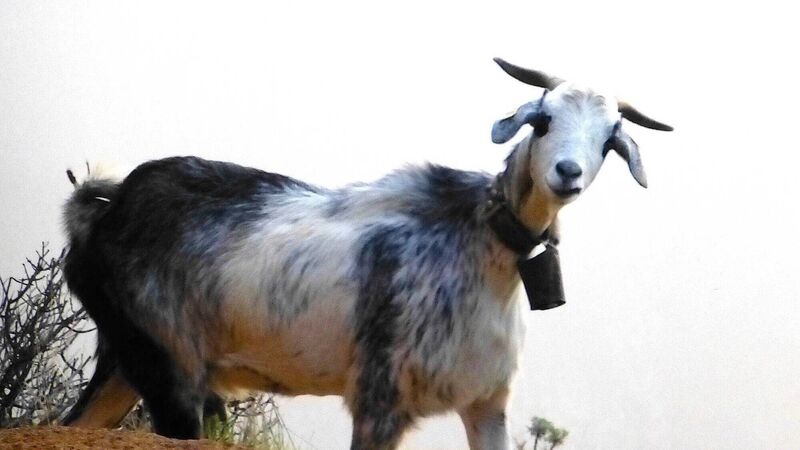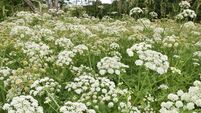La Gomera whistle tells you all you need to know

The goats are of every colour on La Gomera, Canary Islands and, as the herds come home for milking, their bells sound like the carillions of a dozen churches.
A La Gomera friend, having read my column on October 12 about "Silbo Gomero" a whistling language endemic on that small Canarian island, said he thought I hadn't commented enough about its everyday use and usefulness.
I'd talked about it as being taught as a school subject since an Irishwoman brought it to the attention of who listed it as a unique World Heritage Language, and the success of that initiative in preserving the language, which was 'disappearing', in competition with phones, and mobile phones.
Irish is, of course, disappearing in everyday use, ócon, ócon go deo. My own Irish isn’t even 3rd class, having been schooled at a time when its instruction was less interactive and more academic than it is, I'm told, today. However, I still don't hear people speaking it in the streets — although I haven't been in the streets for some time.
The only occasions on which I heard Irish spoken and 'kicked around' as an everyday language was when I spent a year's schooling — my last — at St Eunans in , County Donegal. Most pupils were day-boys, like me, but Eunans was also a boarding school for boys from and Tory islands.
Those 'guys' spoke Irish all the time amongst themselves, and in the handball alley and on the football field. We mainlanders would hear them jabbering away in perfect Irish by the new time. In my previous school, a boarding school in , Irish was taught like Latin was taught. I'm afraid I had little interest in either.
However, in , I engendered interest, wooed by the poetry. I can still recite verses of 'Cill Chais', and 'Mise Raifteirí an File'. It was a generational thing. Irish was ardently, sincerely, and rightly nurtured by those with the brains to understand its value in terms of heritage and identity. I did not have the brains to appreciate it, and could better speak Nu Yawk slang, learned from movies, that I could Irish.
My Gomero friend says that the upland shepherds of Gomera use whistling all the time. On a video forwarded to me by Maeve Cummins, the Irishwoman above mentioned, a shepherd on a cloudy mountainside of the island explains that the silbo is the handiest thing possible. Mobile phones are expensive and need "coverage". 'El silbo' doesn't, and many people can be reached at once without the need for a "conference call" or resorting to .

Whistling, he said, was in everyday use between the shepherds exchanging information about their animals and their grazing, talking about their relations or announcing, births, deaths, and marriages. Tidings could broadcast to the isolated houses and tiny hamlets on the peaks and in the valleys.
Goats always greatly outnumber sheep in the Gomera herds. Goats are seldom seen here in in this century. Yet, they were once not uncommon, wild on the hills or corralled or spancilled on the home acres. My wife, born and raised on a farm, recalls a goat being kept with the cows both for luck, and to calm them.
Goats are, of course, most useful animals when they are not being destructive to all that comes before them. Goat milk is the answer when cows' milk proves too rich for an infant. And, they supply cheese and meat. Friday-night-goat is on the menu in up-valley and hill village bars in . And, in the way it is prepared it is, always, a tasty dish, full of flavour.
Up to a decade ago, there was a herd of goats marooned on a small, tree-less island off Summercove, west of Kinsale. They seemed to be thriving, a big puck with impressive horns and his harem of mistresses. Goats are pretty animals indeed, and the kids are a joy to watch at play. In , sheep are attractive but in goats are 10 times prettier than the wild, unshorn sheep one sees in the mountains.
Another herd I knew of back then was isolated on a headland of Tralong Bay, and again, surviving on what was available, including sea kale and seaweed. Goats can manage where other useful animals can't survive. One sees them in deserts and on the naked rocks of mountains. It seems that the vegetation they eat to the ground in such places, regenerates.
They're hardy animals, of course, but it's as well that Puck Fair, where the puck is confined on a platform two storeys above street level for two days, is held in August (but was cancelled this year) rather than in October. The rain we've had this week, the drenched and dreary days, contradict the glorious October weather I wrote about last week.










